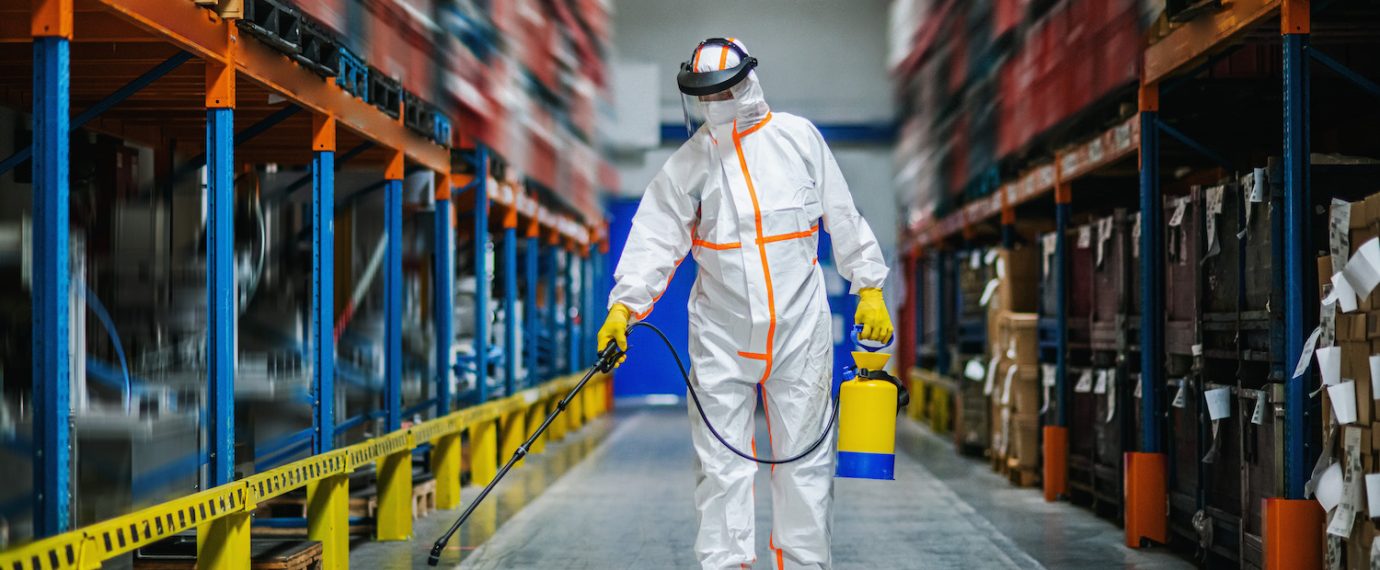By Joe Morales, CSP, EHS Client Advisor II, U.S. Compliance
The Occupational Safety and Health Administration (OSHA) defines industrial hygiene as the process of recognizing, evaluating, and controlling potentially harmful hazards in or around the workplace that may impact employees by causing injury or making them ill.
Industrial hygiene (IH) is crucial because it shields workers against a wide range of illnesses and injuries, including:
- Respiratory Conditions
- Hearing Loss
- Poisoning
- Repetitive Stress Injuries
- Skin Diseases
- Nonfatal and fatal injuries
Below, you will find some frequently asked questions surrounding industrial hygiene.
Is industrial hygiene testing mandatory?
Depending on the materials handled, the methods in which they are managed, and the hazards present at the facility, IH sampling and monitoring may be required by regulation.
For example, per 29 CFR 1910.95, noise levels in the workplace are regulated. Where there is a risk of elevated noise levels, noise testing is often required. Another example is when materials are managed or processed in a way that may cause them to become airborne, producing fumes, vapors, or gases. There are regulated exposure limits to protect the health and safety of workers, which could also indicate that IH monitoring is required.
What do employers need to test for?
Industrial hygienists collaborate with businesses to find and address potential workplace safety hazards. These hazards include but are not limited to:
- Pollutants in the air, including aerosols and fibers
- Biological dangers, like viruses and germs
- Chemical dangers, such as toxic gases, fumes, and vapors
- Ergonomic risks, including improper lifting or vibration effects on the body
- Physical dangers, including heat, cold, radiation, and noise
How does Industrial Hygiene monitoring work?
Assessing industrial hygiene is an essential step in preventing potential dangers and providing crucial information to support the need for mandatory programs or their exclusion. The data provided through monitoring will help determine whether controls are required to ensure worker safety and regulatory compliance. Conducting baseline testing is still advised, even if there is not an anticipated overexposure to a hazard. The initial testing that determines the degree of risk to which personnel are exposed is known as baseline testing.
What kind of equipment do I use to conduct industrial hygiene testing? And how long do I run my test for?
Testing should be carried out using calibrated instruments that can calculate the time-weighted average (TWA) exposure. The time-weighted average accounts for the varying exposure throughout the course of a shift, an 8-hour workday, and a 40-hour workweek. Tests should be run according to set parameters, which may include short-term testing or testing that runs for the length of the employee’s shift.
I have completed my industrial hygiene testing—now what?
Once testing is complete, the next step is to compare the monitoring data to enforceable, appropriate, and/or recommended exposure limits once they are received. Below are some of the exposure level definitions most frequently utilized.
Permissible Exposure Level (PEL)
Limit regulated by the Occupational Safety and Health Administration (OSHA). The TWA concentration for a conventional 8-hour workday and a 40-hour work week, to which it is believed that nearly all workers may be repeatedly exposed, day after day, without adverse effect.
Occupational Exposures Limits (OELs) – Suggested Exposure Limits: Threshold Limit Value (TLV)
Limit suggested by the American Conference of Governmental Industrial Hygienists (ACGIH). The TWA concentration for a conventional 8-hour workday and a 40-hour work week, to which it is believed that nearly all workers may be repeatedly exposed, day after day, without adverse effect.
Recommended Exposure Level (REL)
Limit suggested by the National Institute for Occupational Safety and Health (NIOSH). The TWA concentration for a conventional 8-hour workday and a 40-hour work week, to which it is believed that nearly all workers may be repeatedly exposed, day after day, without adverse effect.
Short Term Exposure Limit (STEL)
The concentration to which it is believed that workers can be exposed continuously for a short period of time without suffering from irritation, chronic or irreversible damage, or narcosis that could lead to injury. The STEL is defined as a 15-minute exposure (and no more than four times per day with 60-minute intervals in between).
My results are “just below” the recommended exposure limits—so no action is required, right?
Even if the results come in below the recommended exposure limits, the contaminant should be continuously monitored to make sure it stays at a safe level. No action is necessary if a monitoring result is discovered to be close to the exposure limit. Controls must be put in place to protect the employee if a monitoring result is discovered to exceed the exposure limit. Controls should be implemented following the below hierarchy of controls, listed from most to least effective.
- Elimination: Physically remove the hazard, which is the most effective control.
- Substitution: Replace the hazard to reduce severity.
- Engineering controls: Isolate people from the hazard.
- Administrative controls: Change the way people work.
- Personal Protective Equipment: Protect the worker with PPE, which is the least effective control.
MSDS vs. SDS: What is the difference?
A safety data sheet (SDS), formerly known as MSDS or material safety data sheet, includes information such as the properties of each chemical, the physical, health, and environmental health hazards, protective measures, and safety precautions for handling, storing, and transporting the chemical. Although the terms SDS and MSDS are often used interchangeably, there’s one crucial difference between them. All SDSs follow the Globally Harmonized System standard sixteen-section format, whereas MSDS formats can vary between organizations, regions, and countries.
Do I need to have a voluntary respiratory protection program?
Per 29 CFR 1910.134(c)(2)(ii), an employer may provide respirators at the request of employees or permit employees to use their own respirators as long as the employer determines that such respirator use will not in itself create a hazard. If the employer determines that voluntary respirator use is permissible, the employer shall provide the respirator users with the information contained in Appendix D (“Information for Employees Using Respirators When Not Required Under the Standard”).
The employer must establish and implement elements of a written respiratory protection program as necessary to ensure that any employee using a respirator voluntarily is medically able to use that respirator, and that the respirator is cleaned, stored, and maintained so that its use does not present a health hazard to the user.
An exception to note is that employers are not required to include in a written respiratory protection program those employees whose only use of respirators involves the voluntary use of filtering facepieces (dust masks).
Summary
By implementing policies and procedures that reduce or eliminate common risks, workplace hygiene measures keep employers accountable for potential workplace hazards and maintain the safety of their employees. In addition, industrial hygienists support an organization’s continued profitability by foreseeing future risks and taking care of problems as they arise. Increased revenue results from this vigilance, which also guarantees that workers can continue to perform their tasks safely.
U.S. Compliance can assist with most industrial hygiene sampling. If you need assistance with site surveys or testing, please email U.S. Compliance.



